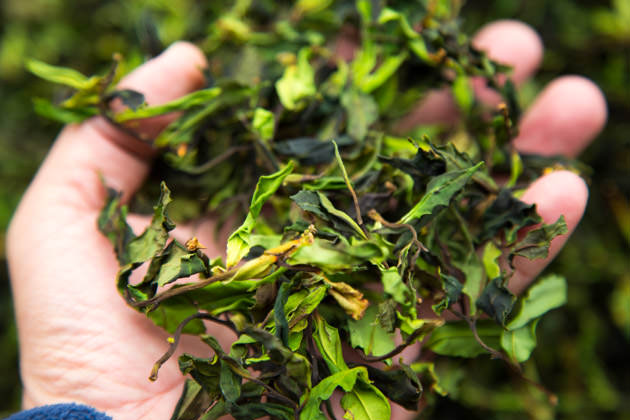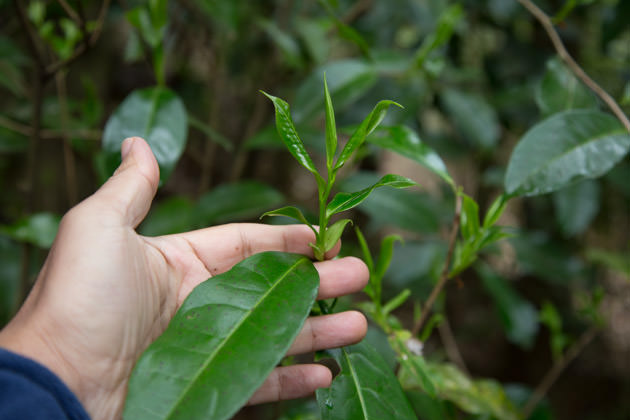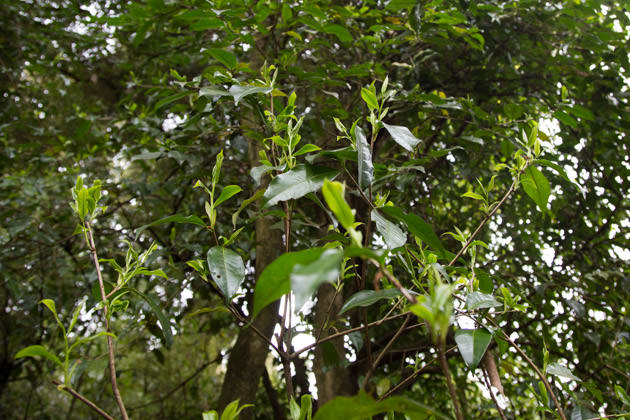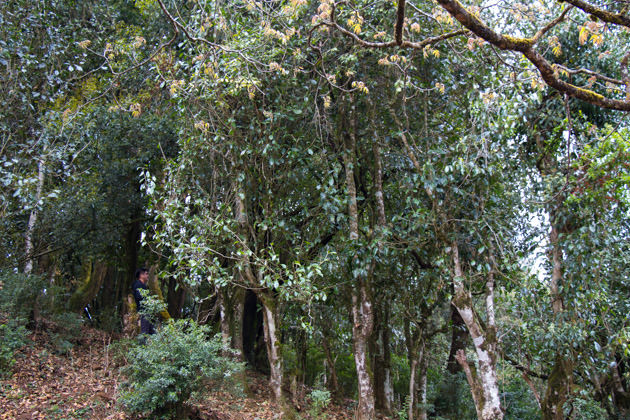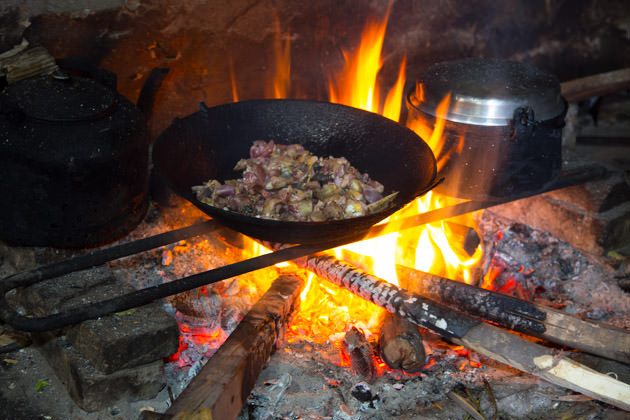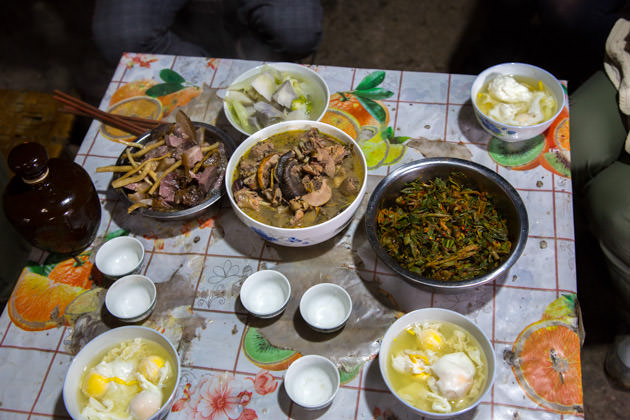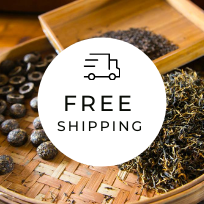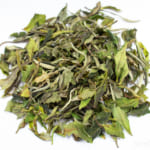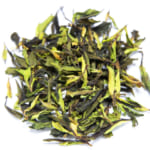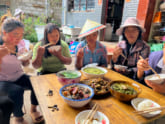- HOME >
- New Arrival at HOJO Online Shop
Pre-Booking of Da Xue Shan Wild Tea and White Tea Mao-Cha
- [2018.04.21] Posted By Akira Hojo
Using the wild tea from Da Xue Shan, we have produced wild raw pu-erh tea and wild white tea.
Since the beginning of 2018, there was extremely less rainfall. As a result, the quality of tea became excellent as tea was growing very slowly. It is reflected in the sweetness on palate and the long lasting after taste. We also succeeded to improve the flavor this year thanks to the improvement in the process.
In previous years, we released Da Xue Shan Wild Tea loose tea (mao-cha) on pre-booking and processed the balance into cake. This year, we will only release limited quantity of loose tea. We have already processed the balance quantity into tea cake now. This is to speed up the entire process and to keep the freshness of tea. Since we only have the loose tea in limited quantity, we will close the pre-booking as soon as the reserved quantity of mao-cha is sold. We are planning to ship out the tea in May.
The appearance of the wild tea is like wild herbs.
The difference between wild tea and wild spices
We have selected the wild tea called Camelia taliensis. One important note is Camelia taliensis is not equal to the wild tea. Wild tea means the tea trees are found naturally growing in the mountain. However, many trees of Camelia taliensis were planted around the village, especially with the recent increasing demand of “wild tea’, many tea farmers started to plant or grafted the Camelia taliensis in their tea gardens. Long ago, the ethnic minority tribes live near the foot of mountain has been drinking tea made from Camelia taliensis. They have also planted a number of Camelia taliensis on the foot of the mountain located near their village. Although some of those trees are old, there are many cattle walking up and down every day. As a result, these trees of Camelia taliensis are naturally fertilized and the taste is lighter compared to the authentic wild tea found in the mountain.
In Yunnan, people always call Camelia taliensis as wild tea, even though the tea tree is grown by people. So, it is very important to distinguish between the real wild tea and human grown Camelia taliensis. It’s common that so-called wild tea in the market is made from the human grown Camelia taliensis. The authentic wild tea generally consists of huge tea trees. It gives very long-lasting taste, clear and transparent taste, with natural sweetness lingers on palate and its taste lasts for many brewing.
The above photo is the Camelia taliensis planted in a tea garden. The photo below is the Camelia taliensis planted on the foot of mountain near the village.
You can tell how huge the size of tea trees is if you compare to me who is standing on the left down. The real wild Camelia taliensis could grow even bigger.
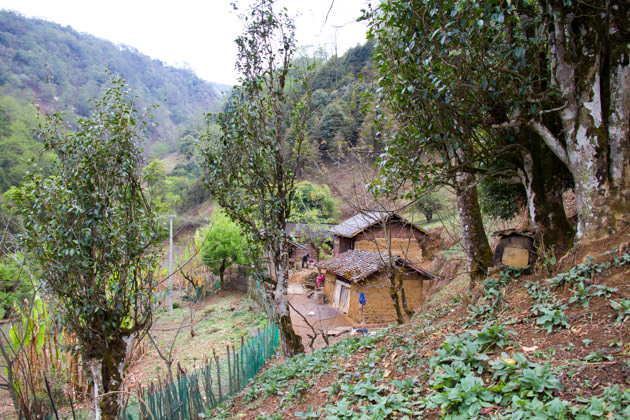
Trees of Camelia taliensis planted around a village located near the foot of mountain.
We built long terms relationship with the tea plucker
As there are so many human-planted “wild tea”, it is important for us to make an effort in order to ensure we obtain the real wild tea. The fresh tea leaves of wild tea were collected by the villagers live at the foot of mountain. In the deep mountain, each small village is normally formed by one ethnic minority tribe and they are lead by the chief of the village. Due to the extreme remote location and lack of infrastructure, the living style is more isolated and they are not used to interact with outsiders. Most of them couldn’t comprehend Mandarin and they only speak their own ethnic minority’s language. Normally they will follow the instruction of the chief.

Usually, the chief of the village will gather the villagers to go for tea plucking in the mountain. We have been meeting the chief a few times in each season. Since the demand of wild tea is increasing and it is becoming more competitive, it is not just a business matter that works but it is important to build a good personal relationship. A few years ago, he was less interactive with us. However, after we have been meeting him over and over again, nowadays we become quite close. When we are visiting his village, his family cooked dinner for us. They use their own chicken, vegetable and a lot of wild herbs for cooking. Thanks to the outstanding quality of those materials, it is not only the taste bud but also my body tissue that really can respond. After the dinner, it is always inevitable that we drink their home brewed and distillate alcohol. I cannot deny that sometimes alcohol helps a lot to make our relationship smoother.
Enhance the flavour with longer withering
We collect the authentic wild tea from the mountain. This wild tea is excellent in taste. But it tends to gives milder flavour. It is because the genuine wild tea is grown under the shaded area in the forest. Due to lack of sunshine, the flavour tends to be lighter. On the other hand, human-planted “wild tea” tends to give strong flavour as those trees are directly exposed to much sunshine. In exchange to its stronger flavour, the taste of human-planted wild tea is lighter and not as clear as the genuine wild tea from the mountain.
As we are aware of the facts mentioned above, we decided to conduct longer withering process. For both wild pu-erh tea and wild white tea, we conducted withering overnight. Then we proceeded pu-erh tea for pan-frying and white tea for the further indoor withering. Thanks to this improvement, we managed to produce tea that we can enjoy both flavour and taste.
Da Xue Shan Wild Pu-erh Tea
I am delighted with the outcome of Da Xue Shan Wild Pu-erh Tea we produced this year. We could manage both material and process in an ideal manner. Last year we have learned from the process of Huo Cao Shan raw pu-erh tea that the longer withering makes the flavour of tea becomes more floral and sweet. So, we applied the same technique on Da Xue Shan wild raw pu-erh tea. We decided not to process the tea on the same day it was plucked. Instead, we let the fresh tealeaf withered overnight and pan-frying was conducted the next day. Thanks to the longer withering, tea has light enzymatic oxidation and developed sweet flavour. It gives very soft and long-lasting aftertaste.
The flavour of this tea is not over showing off. It is rather gentle. With every sipping, the refreshing sweet floral scent is emerging slowly in my mouth. I enjoy its flavour which gently unfold on my palate and not rushing out swiftly. This is the type of tea I love to drink daily.
The flavour of Da Xue Shan Wild Raw Pu-erh Tea is like spring flowers, with trace hint of grapes and green apples flavour. If you love the refreshing floral flavour, mao-cha is a good choice. Based on our experience, the mao-cha of Da Xue Shan is ideal for aging too. If you wish to age this tea, please keep the bag unopen and store in a room that average temperature of a year is highest in your house.
We only have the limited quantity of mao-cha as the balance was already compressed into cake. Please place an order as soon as possible if you are interested.
Pre-Booking of Da Xue Shan Wild Pu-erh Tea
If you are interested to book this tea, please reply us an e-mail, Facebook message or contact our outlet at The Gardens Mall, Kuala Lumpur.
As usual, you will get one more set for free if you get 5 sets. This scheme is applied for both 200g and 600g.
The price indicated is excluding the shipping fee. If you wish us to ship directly to your home address, the shipping fee will be added later. It is advisable to pick it up at our shop and try some new teas of 2018 at the same time.
200g (100g x 2) RM240
600g (100g x 6) RM690
If you get 5 sets, you will get one more set for free.
For oversea customers who is not residing in Malaysia, please visit the following website.
https://hojotea.com.my/posts-195/
Da Xue Shan Wild White Tea
We have developed the production process of Wild White tea together with our manufacturer since two years ago. Nowadays black tea and pu-erh tea produced from wild tea is quite common. But the white tea produced from wild tea is very rare and uncommon.
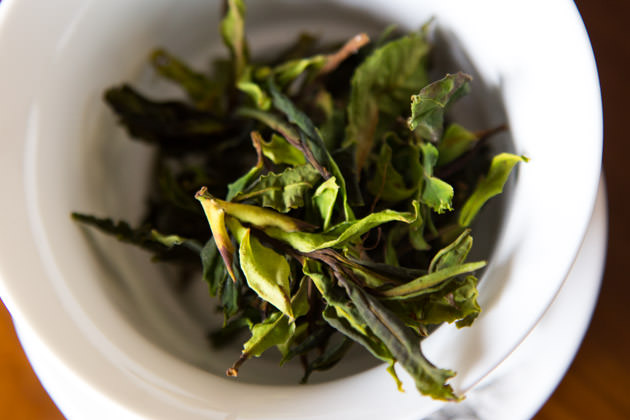
This year we conduct withering of wild white tea on the bamboo plate placed on racks. As we improve the air ventilation, we managed to keep the colour of tea greener than last year with more appealing flavour. It gives refreshing floral scent with a hint of grapes or like fresh spring herbs from forest. It also gives very long-lasting aftertaste; I could feel the taste is thick and lingers down my throat. As it is made from the wild tea collected from deep mountain, it gives a clear and transparent taste and flavour. I also enjoy the sweetness lingers on palate.
This tea is also suitable for aging. It develops fruity and sweet flavour like raw honey after aging. The process of Da Xue Shan Wild White Tea doesn’t involve pan-frying to inactivate enzyme. The enzyme activity is stopped as tea is dried to low moisture content. During the compression of white tea, tea is steamed to soften the leaf. After compression, it takes some time for drying. As tea is moisten during compression, the enzyme in white tea gets slightly activated. As a result, the flavour of Da Xue Shan White Tea cake is fruitier as compared to loose tea which has more distinctive floral scent. So, in terms of flavour, the loose tea and cake are not exactly the same.
As we only have limited quantity of loose tea, please place an order as soon as you can. Once the quantity of loose tea is sold, we will close the booking of loose tea.
Pre-Booking of Da Xue Shan Wild White Tea
If you are interested to book this tea, please reply us an e-mail, Facebook message or contact our outlet at The Gardens Mall, Kuala Lumpur. As usual, you will get one more set for free if you get 5 sets. This scheme is applied for both 200g and 600g.
The price indicated is excluding the shipping fee. If you wish us to ship directly to your home address, the shipping fee will be added later. It is advisable to pick it up at our shop and try some new teas of 2018 at the same time.
200g (100g x 2) RM240
600g (100g x 6) RM690
If you get 5 sets, you will get one more set for free.
For oversea customers who is not residing in Malaysia, please visit the following website.
Related Articles
How to get the latest update on HOJO Tea?
1. Follow Twitter, 2. Click "Like" on Facebook, and 3. Subscribe in newsletter. You can have the latest tea news from HOJO Tea.
 Subscribe the Newsletter to enjoy the privileges
Subscribe the Newsletter to enjoy the privileges- You may receive a free sample upon purchase, or you may have the priority to purchase special products. So please remember to subscribe our newsletter as well as the social network.
- Yunnan Chun Jian Green Tea from High Mountain Gardens
- Yunnan Chun Jian Green Tea is now available.This tea is made from naturally grown leaves harvested from high mountain gardens at 2100m above sea level. It has a rich, long-lasting lingering aftertaste, comparable to raw Pu-erh tea. Yunnan as a Distinctive Tea Growing Region Over the past 20 years, we have explored a wide range …
- Limited Loose Leaf Release of 2025 Da Xue Shan Wild Raw Pu-erh Tea
- We have released the 2025 loose-leaf version of Da Xue Shan Wild Raw Pu-erh Tea.This tea comes from wild tea trees that grow naturally in the high mountains of Yunnan Province, at elevations above 2000 meters. This year, we were only able to secure a small quantity for retail, and the current release is available …
NEW ARTICLES
 Yunnan Chun Jian Green Tea from High Mountain Gardens
Yunnan Chun Jian Green Tea from High Mountain Gardens- Yunnan Chun Jian Green Tea is now available.This tea is made from naturally grown leaves harvested from high mountain gardens at 2100m above sea level. It has a rich, long-lasting lingering aftertaste, comparable to raw Pu-erh tea. Yunnan as a Distinctive Tea Growing Region Over the past 20 years, we have explored a wide range …
 Limited Loose Leaf Release of 2025 Da Xue Shan Wild Raw Pu-erh Tea
Limited Loose Leaf Release of 2025 Da Xue Shan Wild Raw Pu-erh Tea- We have released the 2025 loose-leaf version of Da Xue Shan Wild Raw Pu-erh Tea.This tea comes from wild tea trees that grow naturally in the high mountains of Yunnan Province, at elevations above 2000 meters. This year, we were only able to secure a small quantity for retail, and the current release is available …
 2025 Da Xue Shan Wild White Tea Now Available from Yunnan
2025 Da Xue Shan Wild White Tea Now Available from Yunnan- The 2025 harvest of Da Xue Shan Wild White Tea is now available. Crafted from truly wild Camellia taliensis trees growing naturally in the high-altitude forests of Yunnan, this tea offers a purity and character unique to its origin. This year’s unusually dry climate during the withering season was ideal, resulting in a floral and …
 Why Do Some Teas Taste Astringent? Exploring the Causes and Mechanisms of Astringency
Why Do Some Teas Taste Astringent? Exploring the Causes and Mechanisms of Astringency- Tea can range from having no noticeable astringency to possessing a very strong one. What causes this astringency? This article explores the causes and mechanisms behind astringency in tea. Causes of Astringency Astringency arises from the binding of tea components to proteins in the oral cavity, creating a sensation of tightness or dryness. The tongue …
 The Impact of Heat Sources on Tea Flavor
The Impact of Heat Sources on Tea Flavor- It is widely recognized that the material of a kettle plays an important role in shaping the taste of water for brewing tea. Yet, an often overlooked but equally significant factor is the type of heat source used to boil the water. Different heat sources, whether gas, electric, charcoal, or wood fire, can impart distinct …
 New Release of High Mountain White Tea
New Release of High Mountain White Tea- We are pleased to introduce our High Mountain White Tea, sourced from a unique tea garden with two key features: 1. Located at an altitude of 2200-2300m2. Completely wild and untended The ideal natural conditions of this garden result in tea of exceptional quality, offering a pure and gentle, nourishing taste. High Altitude and Wild …
 New Release of Da Xue Shan Wild White Tea 2024
New Release of Da Xue Shan Wild White Tea 2024- We have released the 2024 Da Xue Shan Wild White Tea Loose Leaf. This tea was produced under our direct supervision during our stay in Yunnan Province, ensuring meticulous production management on site. Definition of Wild Tea in Yunnan Province People in Yunnan strongly associate Camellia taliensis with wild tea, regardless of where it is …
 New Release of Wild Pu-erh Jasmine Pearl
New Release of Wild Pu-erh Jasmine Pearl- Out of curiosity, we decided to create a jasmine tea based on Da Xue Shan Wild Raw Tea. This resulted in an exceptionally rare tea, not only in Japan but also in China. Custom Production Network for Jasmine Tea At our store, we source various types of base teas from different regions during the spring. …
 2024 Overview: Our Yunnan White Tea Quality, Process, and Weather Insights
2024 Overview: Our Yunnan White Tea Quality, Process, and Weather Insights- One of the teas we’ve been focusing on in Yunnan Province is white tea. Historically white tea has been produced in both Fujian Province and Yunnan Province for a long time. While white tea from Fujian Province is well-managed during processing, we are dissatisfied with the quality of the raw materials due to the use …
 Yunnan’s Hospitality Culture: Expressed Through Meals
Yunnan’s Hospitality Culture: Expressed Through Meals- In China, as a form of greeting, it’s common to say “你吃饭了吗?” which means “Have you eaten?” However, in Yunnan Province, the phrase “吃饭” is often used in various situations, more like “Eat, eat,” serving as an invitation to share a meal. Yet, with prolonged exposure to Yunnan, one comes to understand that these meal …
Shop Info

Address:Lot No. T-215, 3rd Floor, The Gardens Mall, Mid Valley City, Lingkaran Syed Putra, 59200 Kuala Lumpur
Tel: +603-2287-4537
Business Hour: 10am to 10pm
Category
- New Arrival at HOJO Online Shop
- Featured Articles
- Newsletter
- Types of Tea
- Origin of Tea
- Teapot and Tea Equipment
- Tea Column
- How to enjoy tea
- Tea Processing
- How to choose quality tea
- Tea constituents and functional effect
- Safety of Tea
- Foods
- Tea Business Operation
- Hobby and Outdoor Activity
- Ranking of Tea
- Video
- FAQ
- Media Release
Profile

- AKIRA HOJO
- I invite you to experience my tea selections.I was born in Nagano, Japan. In university, I studied agricultural chemistry, and I have the master degree in food science. I worked in Japanese food industry for 10 years. I involved in R&D, QC and QA. As a factory manager, I implemented ISO9000 series and managed the factory.
- The Art of Tea Magazine
- We posted the article on “The Art of Tea Magazine No.9, the magazine is published in Taiwan. We featured some scientific view about the tetsubin
- New Straits Times
- The Malaysian National Newspaper, New Straits Times featured HOJO Tea on 17-Oct-2007.

